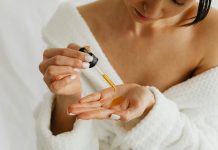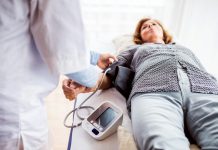
A stroke can be a life-altering event, often resulting in varying degrees of physical disability.
One of the most common challenges faced by stroke survivors is the loss of hand function, which can significantly impact daily activities and overall quality of life.
Fortunately, recent research has led to the development of various strategies that can help improve hand function after a stroke. This review explores these methods, offering hope and practical solutions for recovery.
Stroke occurs when the blood supply to part of the brain is interrupted, causing brain cells to die. This can lead to different physical impairments, depending on the area of the brain affected.
The hand and arm are frequently affected because many brain regions involved in controlling these limbs can be damaged during a stroke. The good news is that the brain is adaptable, and with the right techniques, recovery is possible.
One of the most researched strategies for regaining hand function is physical therapy. This involves exercises designed to help strengthen hand muscles and improve coordination and flexibility.
Therapists use various techniques such as passive movements, where the therapist moves the patient’s hand, and active exercises, where the patient performs movements themselves.
Studies have shown that regular, targeted physical therapy can significantly improve hand function, especially when started early after a stroke.
Occupational therapy is another critical approach. Unlike physical therapy, which focuses on improving the physical aspects of hand movement, occupational therapy helps individuals relearn how to perform daily activities such as eating, dressing, and writing.
Occupational therapists use real-life tasks as part of the rehabilitation process, which can enhance motivation and functional recovery. They also provide adaptive tools and techniques to make everyday tasks easier, supporting independence and improving quality of life.
Technological advancements have also introduced new opportunities for recovery. One exciting development is the use of robotic devices and virtual reality (VR).
These technologies can provide repetitive, task-specific, and interactive exercises, making the rehabilitation process more engaging.
For example, robotic gloves and VR games designed to simulate kitchen tasks or office work can enable intensive practice in a controlled, motivating environment. Research indicates that these high-tech options can lead to improvements in hand function that are comparable to traditional therapy methods.
Electrical stimulation is another technique that has shown promise. This method involves using electrical currents to activate nerves in the affected hand, causing muscles to contract.
It can be used passively, where the device induces movement, or actively, where the patient attempts to move while the device assists and enhances the movement.
This approach can help improve muscle strength and coordination, and when combined with conventional therapies, it can accelerate progress.
Finally, emerging research suggests that certain medications might enhance recovery by promoting brain plasticity—the brain’s ability to reorganize itself by forming new neural connections.
While this area of research is still in its early stages, it represents a potential future where medication could be used alongside physical and occupational therapy to boost recovery outcomes.
Recovery from stroke is a long and challenging journey, but with the right strategies, improvements can be achieved.
Combining physical therapy, occupational therapy, innovative technologies, and potentially new medications offers the best chance for stroke survivors to regain hand function and independence.
Each person’s recovery path is unique, and a tailored approach that considers individual needs and goals is essential for the best outcomes.
By staying informed about the latest research and available treatments, stroke survivors and their caregivers can navigate the recovery process with greater confidence and hope.
If you care about stroke, please read studies about how to eat to prevent stroke, and diets high in flavonoids could help reduce stroke risk.
For more information about health, please see recent studies about how Mediterranean diet could protect your brain health, and wild blueberries can benefit your heart and brain.
Copyright © 2024 Knowridge Science Report. All rights reserved.



